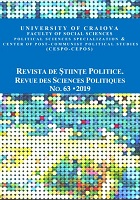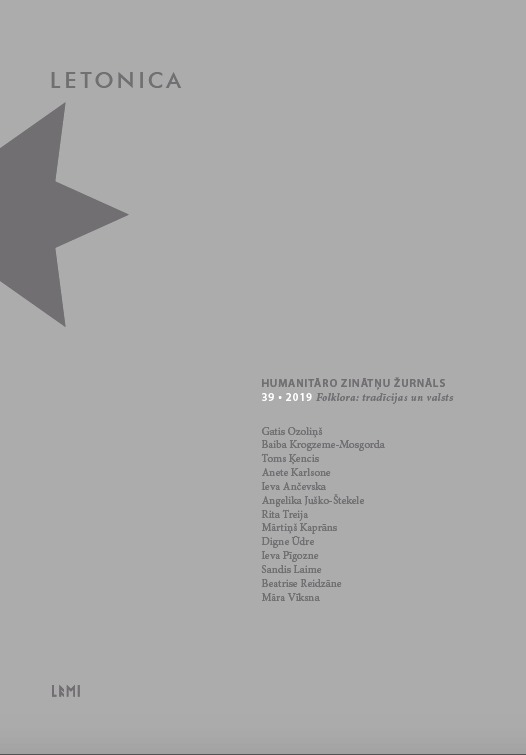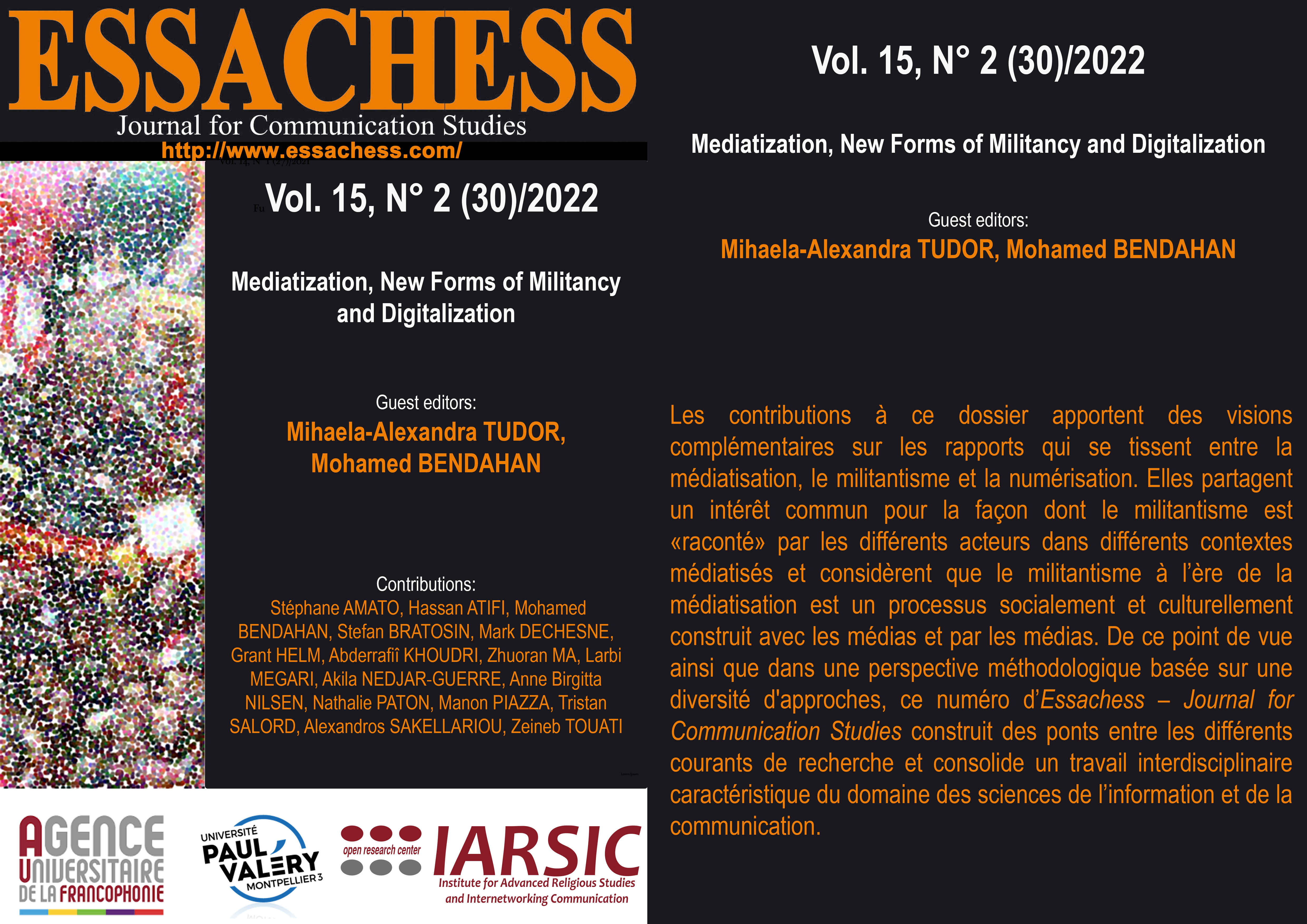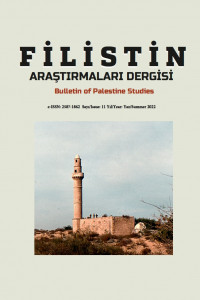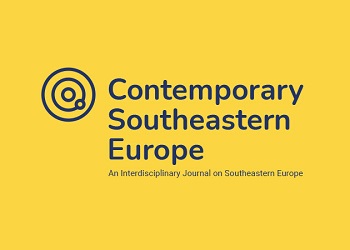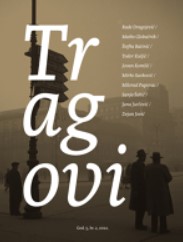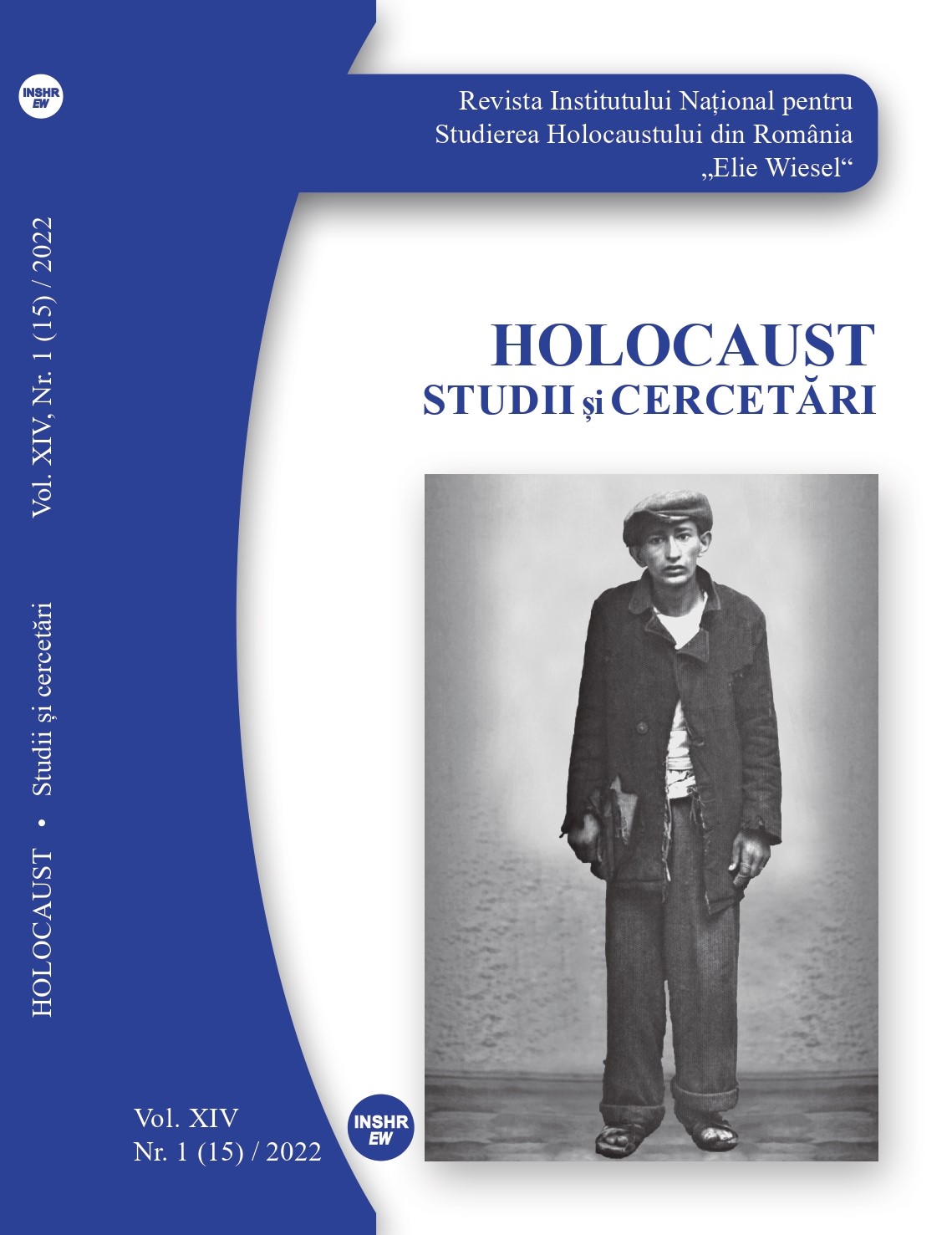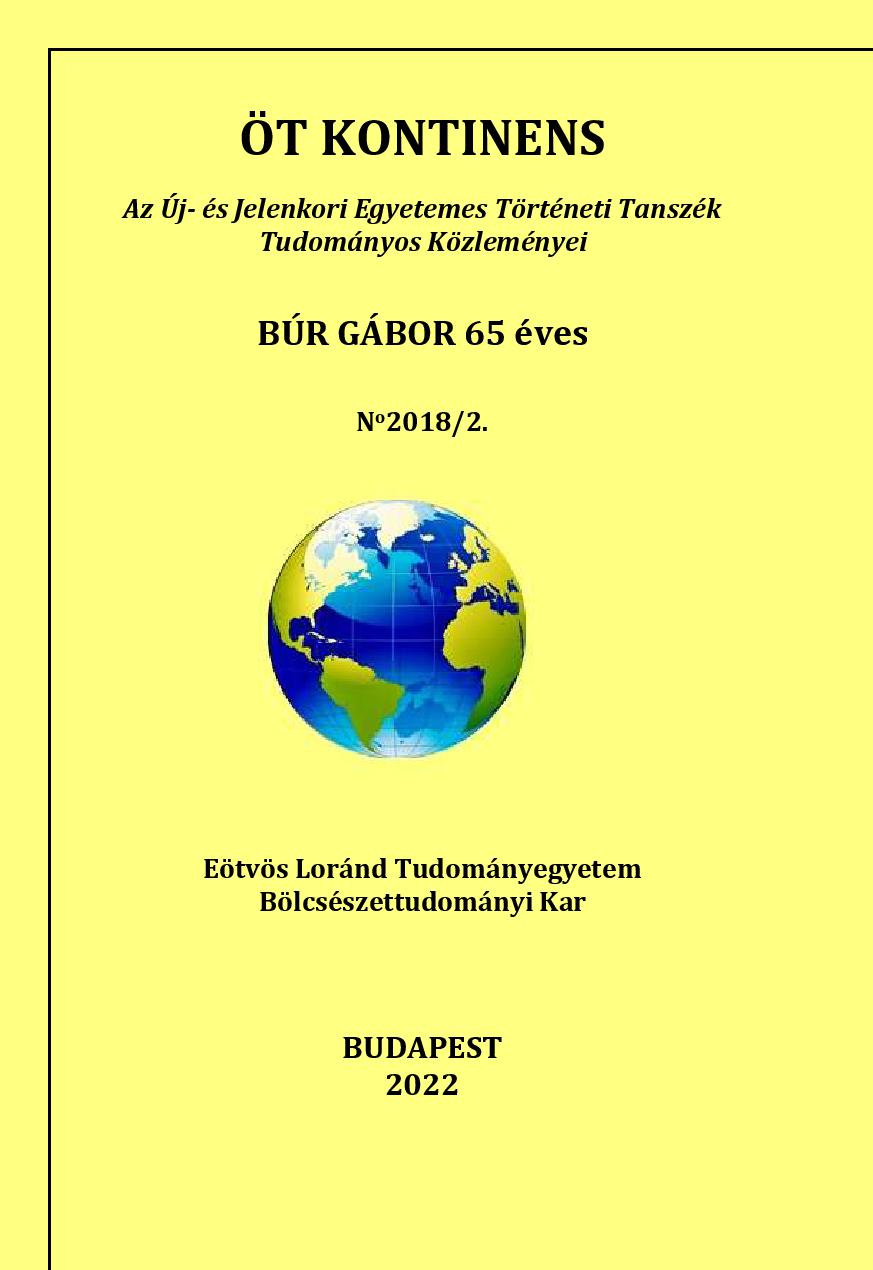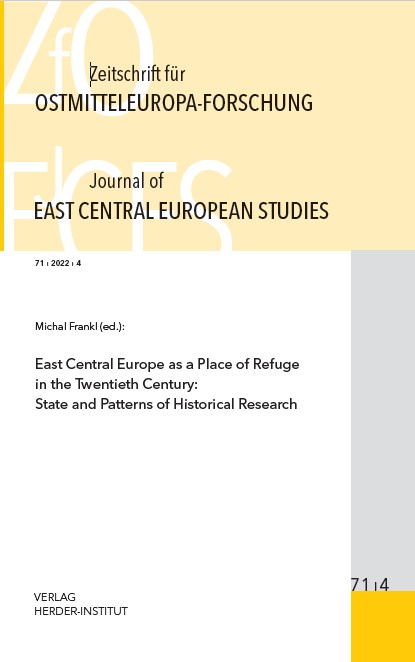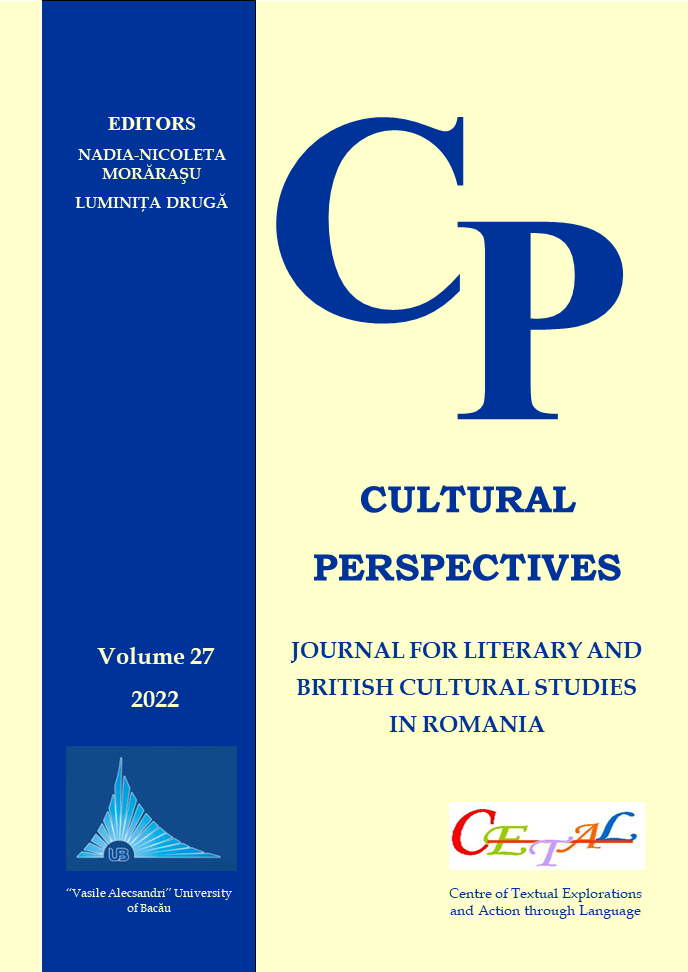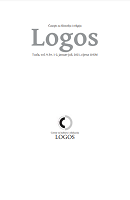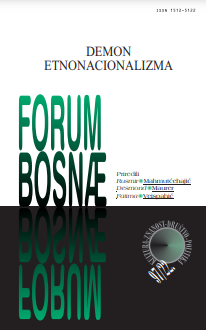Author(s): Baiba Krogzeme-Mosgorda / Language(s): Latvian
Issue: 39/2019
In 1953 the Institute of Ethnography and Folklore of the Latvian SSR Academy of Sciences organised a discussion about the principles of publishing Latvian folksongs. The archival materials provide abundant information not only on the creation of the first sizeable Soviet period publication of Latvian folksongs (“Latviešu tautasdziesmas”, 1955–1957) but also on the ideological, administrative and scientific contexts, which accompanied the forced inclusion of Latvian folklore studies into the Soviet science system during the first post-war decade. During the Stalin era, folklore as the artistic creativity of the working people was regarded as especially significant in the state policy. Correctly selected and interpreted classical folklore together with the newly composed “folklore” texts, which reflected the positive experience of socialism, became a significant tool in the ideological education of Soviet citizens. Preparing folklore compilations with translations into Russian, from the nations incorporated into the USSR, was one of the priorities of the post-war Soviet folklore studies. The aim was to promote and at the same time to control the elaboration of united principles for publishing folklore by involving the Communist Party, science and education institutions. The 1953 discussion of the three-volume compilation Latvian Folksongs is a good example of that. The Party officials, representatives of education and amateur institutions, as well as scholars from the Academy of Science of Russia and other Soviet Republics were invited to express their opinions. The keynote paper “The Basic Principles of Publishing Latvian Folksongs” clearly demonstrates the theoretical areas, where the national traditions of folksong research and publication were broken down and adapted to the Marxism-Leninism methodology: 1) arranging folksong texts by the historical principle, that is, relating them to specific socio-economic formations (feudalism, capitalism, socialism); 2) including the Soviet era songs in the folksong tradition; and 3) selecting and editing folksong texts according to the communist educational aims. However, the debates reveal the complications of putting these aims into practice. They relate to the extensive Latvian folklore archive, which needed to be reviewed and re-evaluated in light of Marxism ideology, the unclear definition of Soviet folksongs and Soviet folklore itself, and also the decision of Latvian folklorists to create a scientific, and not a popular folksong edition as a pilot project for the future complete academic publication of folksongs. The comparatively small impact of the extensive discussion on the publication of the compilation “Latvian Folksongs” can be explained firstly by the death of Stalin in 1953 and the subsequent “thaw” in Soviet folklore studies. However, it is also an indication of the Soviet regime’s inability to create entirely new Latvian folklore studies without linking them to the pre-war scientific achievements, and the possibility in scientific practice to avoid Soviet directives by making use of their weak and inconsistent theoretical background. In 1953 the Institute of Ethnography and Folklore of the Latvian SSR Academy of Sciences organised a discussion about the principles of publishing Latvian folksongs. The archival materials provide abundant information not only on the creation of the first sizeable Soviet period publication of Latvian folksongs (“Latviešu tautasdziesmas”, 1955–1957) but also on the ideological, administrative and scientific contexts, which accompanied the forced inclusion of Latvian folklore studies into the Soviet science system during the first post-war decade.During the Stalin era, folklore as the artistic creativity of the working people was regarded as especially significant in the state policy. Correctly selected and interpreted classical folklore together with the newly composed “folklore” texts, which reflected the positive experience of socialism, became a significant tool in the ideological education of Soviet citizens. Preparing folklore compilations with translations into Russian, from the nations incorporated into the USSR, was one of the priorities of the post-war Soviet folklore studies. The aim was to promote and at the same time to control the elaboration of united principles for publishing folklore by involving the Communist Party, science and education institutions. The 1953 discussion of the three-volume compilation Latvian Folksongs is a good example of that. The Party officials, representatives of education and amateur institutions, as well as scholars from the Academy of Science of Russia and other Soviet Republics were invited to express their opinions.The keynote paper “The Basic Principles of Publishing Latvian Folksongs” clearly demonstrates the theoretical areas, where the national traditions of folksong research and publication were broken down and adapted to the Marxism-Leninism methodology: 1) arranging folksong texts by the historical principle, that is, relating them to specific socio-economic formations (feudalism, capitalism, socialism); 2) including the Soviet era songs in the folksong tradition; and 3) selecting and editing folksong texts according to the communist educational aims. However, the debates reveal the complications of putting these aims into practice. They relate to the extensive Latvian folklore archive, which needed to be reviewed and re-evaluated in light of Marxism ideology, the unclear definition of Soviet folksongs and Soviet folklore itself, and also the decision of Latvian folklorists to create a scientific, and not a popular folksong edition as a pilot project for the future complete academic publication of folksongs. The comparatively small impact of the extensive discussion on the publication of the compilation “Latvian Folksongs” can be explained firstly by the death of Stalin in 1953 and the subsequent “thaw” in Soviet folklore studies. However, it is also an indication of the Soviet regime’s inability to create entirely new Latvian folklore studies without linking them to the pre-war scientific achievements, and the possibility in scientific practice to avoid Soviet directives by making use of their weak and inconsistent theoretical background.
More...

